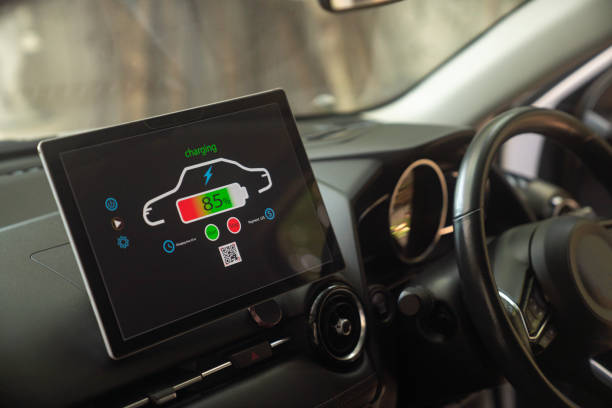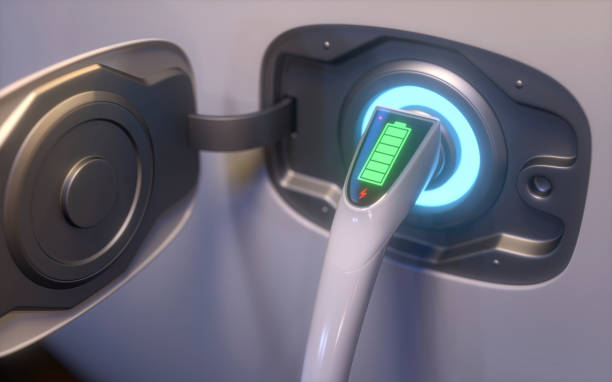Discover essential DIY electric vehicle maintenance tips to keep your EV in top shape. Learn simple steps for tire care, battery maintenance, and more.
Introduction

Maintaining your electric vehicle (EV) doesn’t have to be a daunting task. With the right DIY electric vehicle maintenance tips, you can keep your EV in top shape without relying on professional help for every little issue. Whether you’re a new EV owner or someone looking to improve your maintenance routine, understanding some key aspects of electric vehicle care can make a big difference.
In this guide, we’ll dive into practical tips for DIY EV maintenance, covering everything from tire checks to battery care. By following these straightforward steps, you’ll not only enhance the longevity of your vehicle but also save time and money. So, let’s get started on making your electric car as reliable as possible
Understanding Your Electric Vehicle
To effectively carry out DIY electric vehicle maintenance, it’s crucial to understand the basics of your EV. Unlike traditional cars, electric vehicles have unique components and systems that require specific care. Here’s a quick overview to get you acquainted with your electric car.
Overview of EV Components
Electric vehicles are designed with several key components that need regular attention. The most critical ones include the battery, tires, and cooling systems. The electric vehicle battery is essentially the heart of your EV, providing the power necessary for operation. Regular maintenance of this battery is crucial to ensure its longevity and performance.
How EV Maintenance Differs from Traditional Vehicles
Maintaining an EV involves different practices compared to conventional vehicles. For instance, electric vehicle maintenance often focuses more on battery health and less on engine-related issues. Unlike gas-powered cars, EVs don’t have an engine or exhaust system, which eliminates some maintenance tasks. However, keeping an eye on the cooling system and EV tire maintenance becomes more important. Understanding these differences helps you tailor your maintenance routine effectively.
By familiarizing yourself with these fundamental aspects of your electric vehicle, you’ll be better prepared to tackle routine checks and keep your EV running smoothly. Next, we’ll dive into practical DIY electric vehicle maintenance tips to help you manage these tasks confidently.
Essential DIY Maintenance Tips
Keeping your electric vehicle (EV) in top condition can be straightforward with a few DIY electric vehicle maintenance tips. Here’s a breakdown of essential tasks to ensure your EV runs smoothly and efficiently.
Regular Tire Inspections and Maintenance
Maintaining your EV’s tires is crucial for safety and performance. Regularly check the tire pressure and ensure it’s within the recommended range for optimal performance and efficiency. Under-inflated tires can affect your vehicle’s handling and reduce its range. Also, inspect the tread depth to ensure it’s sufficient for safe driving. If you notice any uneven wear or alignment issues, addressing them promptly can prevent more significant problems down the road.
Battery Care and Maintenance
The electric vehicle battery is a critical component that requires regular attention. Start by checking the battery’s charge level and its overall health. Ensure that the battery terminals are clean and free from corrosion, which can affect performance. Regularly monitor battery indicators on your dashboard for any warning signs. Performing these checks can help you address potential issues before they become major problems. Proper DIY EV battery care can extend the life of your battery and maintain your vehicle’s efficiency.
Cooling System Checks

The cooling system in your EV is responsible for regulating the temperature of the battery and other components. Overheating can lead to decreased performance and potential damage. Regularly check the coolant level and ensure it’s at the recommended level. Look out for any leaks or signs of overheating, such as unusual smells or noises. Proper maintenance of the cooling system helps ensure that your EV runs smoothly, even under demanding conditions.
Brake System Maintenance
Although EVs use regenerative braking to extend the life of the brake system, regular checks are still necessary. Inspect the brake pads and fluids periodically to ensure they are in good condition. Since EVs have different braking systems compared to traditional vehicles, understanding these differences can help you perform more accurate maintenance. Keeping the brake system in top condition is crucial for safety and performance.
By following these DIY electric vehicle maintenance tips, you’ll keep your EV running efficiently and extend its lifespan. Next, we’ll explore how to troubleshoot common issues that might arise with your electric vehicle.
Troubleshooting Common Issues
Even with regular maintenance, you might encounter some issues with your electric vehicle (EV). Knowing how to troubleshoot these common problems can save you time and avoid unnecessary trips to the repair shop. Here’s how to tackle some typical EV issues with these DIY electric vehicle maintenance tips.
Diagnosing and Addressing Battery Issues
One of the most critical aspects of electric vehicle battery maintenance is recognizing when something is wrong. Common signs of battery issues include a decrease in driving range, difficulty starting the vehicle, or warning lights on your dashboard. If you notice any of these symptoms, check the battery connections and terminals for corrosion or looseness. Ensure the battery is charged to the appropriate level. For persistent problems, consult your vehicle’s manual or seek professional advice.
Handling Electrical System Glitches
Electrical issues in your EV can manifest as malfunctioning lights, unresponsive controls, or unexpected error messages. Start by checking the fuses and circuit breakers to see if any need replacing. Also, ensure that all electrical connections are secure and free from damage. If you’re dealing with software glitches, check for any available updates for your vehicle’s system and install them as needed. Proper troubleshooting of these glitches helps maintain your EV’s performance and reliability.
Dealing with Software Updates
Electric vehicles often require software updates to enhance performance and fix bugs. Check your vehicle’s settings or manufacturer’s website for information on the latest updates. Many EVs allow you to perform updates through the vehicle’s onboard system or via a mobile app. Keeping your software up to date ensures that your EV operates with the latest features and improvements, contributing to a smoother driving experience.
By following these troubleshooting tips, you can address many common issues yourself and keep your electric vehicle in excellent condition. In the next section, we’ll discuss when it’s time to seek professional help for more complex problems.
When to Seek Professional Help
While many maintenance tasks can be handled with DIY electric vehicle maintenance tips, there are times when it’s best to consult a professional. Recognizing these situations early can prevent more serious issues and ensure your EV remains in optimal condition.
Signs That Indicate Professional Assistance is Needed
Some issues are complex and beyond basic DIY fixes. If you encounter symptoms such as unusual noises, persistent warning lights, or significant drops in performance, it may be time to seek professional help. Problems like severe battery degradation, major electrical system failures, or issues with the cooling system often require specialized diagnostic tools and expertise. Ignoring these signs could lead to further damage or safety concerns.
How to Choose a Qualified EV Service Center
When looking for a professional to handle your EV’s maintenance, it’s important to choose a service center with experience in electric vehicles. Look for a facility that specializes in EVs or has certified technicians trained in handling the specific needs of electric vehicles. Read reviews, check certifications, and ask about their experience with your particular make and model. A qualified service center will not only address your current issues but also help with ongoing maintenance to keep your EV in top shape.
By knowing when to seek professional assistance and choosing the right service center, you ensure that your electric vehicle receives the expert care it needs for long-term reliability and performance.
FAQ
What are some basic DIY maintenance tips for electric vehicles?
Answer: Some basic DIY electric vehicle maintenance tips include regularly checking tire pressure, maintaining the battery by cleaning terminals and monitoring charge levels, inspecting the cooling system for leaks and coolant levels, and examining the brake system for pad wear and fluid levels. These simple tasks can help ensure your EV runs smoothly and efficiently.
How often should I perform maintenance on my electric vehicle?
Answer: The frequency of maintenance depends on your EV model and usage, but a good rule of thumb is to follow the manufacturer’s recommended maintenance schedule. Typically, you should check tire pressure and battery health monthly, and perform a more thorough inspection of the cooling system and brakes every 6 to 12 months. Regular maintenance helps prevent issues and keeps your EV in top condition.
Can I perform battery maintenance myself?
Answer: Yes, you can handle some aspects of DIY EV battery care yourself, such as cleaning battery terminals and checking the battery charge level. However, if you notice significant issues, such as rapid battery degradation or persistent warning lights, it’s best to consult a professional. Proper battery maintenance is crucial for maintaining your EV’s performance and longevity.
What are common electric vehicle maintenance problems?
Answer: Common electric vehicle maintenance problems include battery degradation, issues with the cooling system, and electrical system glitches. You might notice a decrease in driving range, overheating, or malfunctioning controls. Regular inspections and prompt troubleshooting can help address these issues before they become major problems.
How can I troubleshoot minor issues with my EV?
Answer: To troubleshoot minor issues, start with basic checks like inspecting tire pressure, cleaning battery terminals, and ensuring all electrical connections are secure. For software-related problems, check for and install any available updates. If these steps don’t resolve the issue, consult your vehicle’s manual or seek professional advice to address more complex problems.



Hmm it seems like your website ate my first comment (it wass extremely long) soo I guess
I’ll just sum it up what I had written and say, I’m thnoroughly enjoying your blog.
I too am an aspiring blog writer but I’m still new to everything.
Do you have any points for novice blog writers?I’d genuinely appreciate it. https://Evolution.ORG.Ua/
Hmm it seems loke youur website ate my first comment (it was extrremely long)
so I guess I’ll just sum it up what I had written and say, I’m
thoroughly enjoying your blog. I too aam an aspiring bloog writer but I’m still new to everything.
Do you have any points for novice blog writers? I’d genuinely appreciate
it. https://Evolution.ORG.Ua/